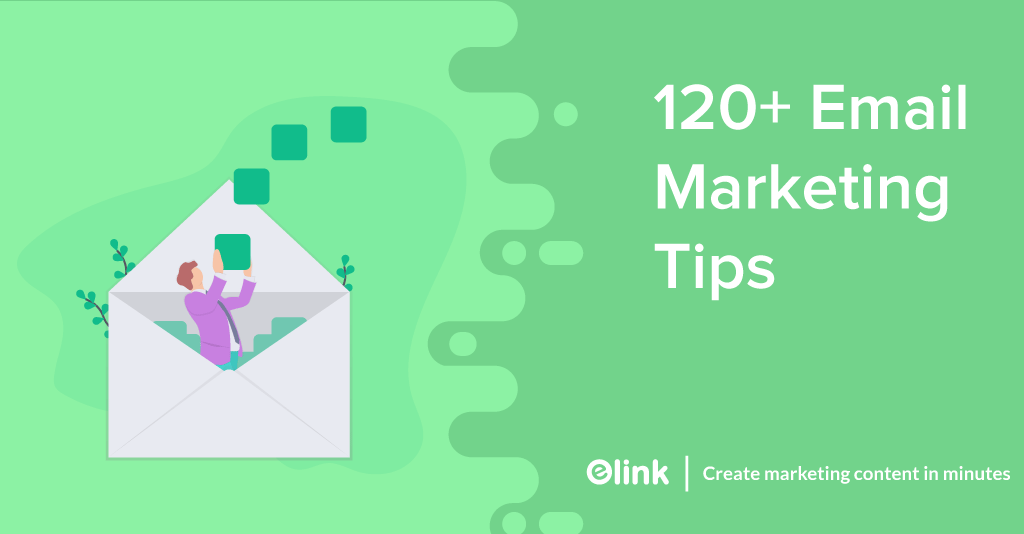What is SEO?
SEO is short form for “Search engine optimization”. It is a long-term marketing strategy employed in order to improve a websites visibility and organic search results in google and other global search engines.
SEO is the practice of optimizing a website to rank higher in search engine results. It is a process that can be broken down into two main areas: on-page SEO and off-page SEO.
On-page SEO is the practice of optimizing a website’s content and code to rank higher in search engine results. This means making sure that your website’s title tags, meta tags, and other elements are optimized for the keywords you want to rank for.
Off-page SEO is the practice of optimizing a website to rank higher in search engine results by building links from other websites. This means getting other websites to link to your website. The more links you have from high-quality websites, the higher your website will rank in search engine results.
SEO is a long-term marketing strategy. This means that it can take months or even years to see the results of your SEO efforts. But, if done correctly, SEO can be a very effective way to improve your website’s visibility and organic search results.
How can SEO be used to improve a website’s ranking?
SEO, or search engine optimization, is the practice of improving the ranking of a website on search engines. The higher the ranking, the more likely people are to find the website.
There are a number of ways to improve a website’s ranking on search engines. The most important is to create high-quality content that is relevant to the website’s target audience. The website’s design and structure are also important factors.
SEO can be used to improve a website’s ranking in a number of ways. The most important is to create high-quality, keyword-rich content. The website’s design and structure are also important factors.
optimizing website content for the search engines is an ongoing process. It’s important to regularly review and update the content to ensure that it is keyword-rich and relevant to the target audience.
What are some common SEO techniques?
SEO is the practice of optimizing a website to rank higher in search engine results. There are a number of techniques that can be used to improve a website’s SEO, and many businesses invest in SEO services to help them improve their online visibility.
Some common SEO techniques include optimizing title tags and meta descriptions, creating quality content, building backlinks, and improving site speed. These are just a few of the many strategies that can be used to improve a website’s SEO. businesses should consider hiring an SEO agency or consultant to help them improve their website’s ranking in search engine results pages.4. How can SEO be used to improve a website’s visibility?
SEO is the practice of optimizing a website to rank higher in search engine results. It can be used to improve the visibility of a website and attract more visitors.
There are a number of ways to improve a website’s SEO, including:
1. Choose the right keywords
When optimizing a website, it is important to choose the right keywords. Keywords are the terms that people use when searching for information. Choose keywords that are relevant to your website and that you think people will use when searching for your site.
2. Use keyword-rich titles and descriptions
When creating titles and descriptions for your website, be sure to use keywords that are relevant to your site. This will help your site to rank higher in search results.
3. Use keyword-rich anchor text
Anchor text is the text that is used to link to other websites. When creating links to other websites, be sure to use keyword-rich anchor text. This will help your site to rank higher in search results.
4. Optimize your website for search engines
There are a number of ways to optimize your website for search engines. These include using keyword-rich titles and descriptions, using keyword-rich anchor text, and using the right keywords.
5. Submit your website to directories
One way to improve your website’s visibility is to submit it to directories. This will help your site to be listed in more directories, which will increase your chances of being found by potential visitors.
6. Promote your website
There are a number of ways to promote your website. These include submitting your site to directories, promoting your site on social media, and writing articles about your site.
7. Exchange links with other websites
Link exchange is a process whereby two websites agree to link to each other. This can be a helpful way to improve your website’s visibility.
8. Use pay-per-click advertising
Pay-per-click (PPC) advertising is a way of advertising on the Internet in which you pay a fee for each click on your ad. This can be a effective way to attract visitors to your website
What are some common SEO myths?
SEO is an ever-changing and complex field, and as such, there are a lot of myths and misconceptions out there. In this blog post, we’ll be busting five of the most common SEO myths.
1. “Keyword stuffing is an effective SEO strategy.”
This is one of the oldest SEO tricks in the book, and it simply doesn’t work anymore. In the early days of SEO, webmasters would stuff their pages with as many keywords as possible, in the hopes that this would help their pages rank higher in search results. However, search engines have since gotten wise to this tactic, and now keyword stuffing will actually hurt your rankings. So, what should you do instead? Use keywords judiciously, and focus on creating quality content that will appeal to your target audience.
2. “SEO is all about getting to the top of the search engine rankings.”
While it’s true that SEO can help you improve your visibility in search results, it’s important to remember that there is more to SEO than just ranking high. In fact, SEO is really about creating a website that is easy for both users and search engines to use. This means having well-written and informative content, a clean and user-friendly design, and a navigation structure that is easy to understand. By focusing on these elements, you will not only improve your chances of ranking well, but you will also create a better overall experience for your users.
3. “SEO is too complicated for me to understand.”
SEO can certainly seem like a complex and daunting task, but it doesn’t have to be. There are a number of resources available that can help you learn the basics of SEO. Additionally, many SEO tasks can be outsourced to an experienced professional. However, it is still important to have a basic understanding of SEO, as this will allow you to more effectively manage your website’s SEO.
4. “I don’t need to worry about SEO because I’m already ranking well.”
Just because you’re currently ranking well, doesn’t mean you can afford to neglect your SEO efforts. The truth is, the SEO landscape is constantly changing, and
How can SEO be used to improve a website’s usability?
It’s no secret that SEO and usability are closely related. In fact, there’s a good chance that you’re already using some basic SEO techniques to improve your website’s usability. But what exactly is usability, and how can you use SEO to take it to the next level?
Usability is all about making it easy for users to find what they’re looking for on your website. That means having a well-organized structure, clear labels, and helpful, informative content. It also means making sure your website loads quickly and is easy to use on all devices.
There are a number of ways to use SEO to improve your website’s usability. Here are just a few:
1. Use clear, descriptive titles and meta descriptions.
Your titles and meta descriptions are some of the first things users will see when they find your website in the search results. So, it’s important to make them as clear and descriptive as possible. Include the keywords you’re targeting, but don’t stuff them in there. Just use them naturally to let users know what they can expect to find on your page.
2. Structure your content using headlines and subheadings.
Headlines and subheadings help to break up your content and make it easier to read. They also give users an idea of what each section is about, so they can quickly find the information they’re looking for. Again, be sure to include your target keywords in your headlines and subheadings. But don’t go overboard – just use them sparingly to avoid keyword stuffing.
3. Optimize your images.
In addition to making your website more visually appealing, optimizing your images can also help improve your SEO. Be sure to include relevant keywords in your image file names and alt text. This will help search engines index your images, and it may also help users find your website when they’re searching for images.
4. Use internal links.
Linking to other pages on your website can help users navigate your site and find the information they’re looking for. It can also help search engines index your pages and improve your website’s overall authority. When linking to other pages on your site,
What are some common SEO mistakes?
SEO is a complex and ever-changing field, and it can be difficult to keep up with all the latest best practices. That’s why it’s important to be aware of some of the most common SEO mistakes so that you can avoid them.
1. Not Optimizing for the Right Keywords
One of the most common SEO mistakes is failing to optimize for the right keywords. Keyword research is essential for any SEO campaign, and it’s important to target keywords that are relevant to your business and have a decent amount of search volume.
2. Ignoring On-Page SEO
Another common mistake is ignoring on-page SEO. This refers to all the SEO factors that you can control on your own website, such as title tags, meta descriptions, header tags, and image alt text. Optimizing your website for on-page SEO can be a complex task, but it’s essential for any successful SEO campaign.
3. Not Creating Compelling Content
Content is still king when it comes to SEO, and if you’re not creating compelling and informative content, you’re bound to be left behind. In order to rank well in search engine results pages, your content needs to be relevant to the keywords you’re targeting and it needs to be of high quality.
4. Not Promoting Your Content
Creating great content is only half the battle – you also need to make sure that people are actually seeing it. One of the best ways to promote your content is to submit it to social bookmarking sites and social media networks. This will help to increase its visibility and give it a better chance of being seen by potential customers.
5. Not Building Links
Link building is another essential component of any successful SEO campaign, yet it’s often overlooked or neglected. In order to rank well, your website needs to have links from high-quality websites. There are a number of ways to build links, such as through guest blogging, directory submissions, and social media.
6. Overusing Keywords
One of the most common SEO mistakes is keyword stuffing, which is the act of cramming as many keywords into your content as possible. Not only is
How can SEO be used to improve a website’s content?
SEO is all about improving your website so that it ranks higher in search engine results pages (SERPs), and thus gets more traffic.
One of the most important factors in SEO is the quality of your website’s content.
If your content is well-written, relevant, and keyword-rich, then it will not only rank higher in search results, but it will also be more likely to convert visitors into customers or leads.
Here are eight ways that you can use SEO to improve your website’s content:
1. Write keyword-rich titles and meta descriptions
Your titles and meta descriptions are two of the most important elements of your webpages from an SEO perspective.
Make sure that your titles and descriptions are keyword-rich and accurately describe the content on your page.
This will not only help your pages rank higher in search results, but it will also help to increase your click-through rates (CTRs).
2. Use keyword-rich headings and subheadings
Headings and subheadings are another important element of your webpages.
Similar to your titles and meta descriptions, you should make sure that your headings and subheadings are keyword-rich and accurately describe the content on your page.
Not only will this help your pages rank higher in search results, but it will also make your content easier to read and more user-friendly.
3. Optimize your images
Make sure to optimize your images for SEO. This means adding keywords to your image file names and alt text.
Doing this will help your images rank higher in Google Image search results.
Additionally, it will help to increase your website’s overall better SEO as search engines will have an easier time indexing your website’s content.
4. Use internal links
Internal linking is important for two main reasons. First, it helps to increase the SEO of your website by helping search engines index your pages.
Second, it helps to keep visitors on your website longer by providing them with additional resources that they may be interested in.
Make sure
What are some common SEO tools?
There are a number of different tools that can be used to help improve your SEO. Here are 9 of the most common:
1. Google Analytics
2. Google Search Console
3. Moz
4. Ahrefs
5. SEMrush
6. KWFinder
7. Ubersuggest
8. BuzzSumo
9. SERPstash
There are a lot of different factors that go into SEO, and it can be tough to keep track of all of them. That’s why it’s important to focus on the basics, and make sure your content is optimized for search engines. Here are 10 simple ways to do that:
1. Use keyword-rich titles: Make sure your titles include the keywords you want to target. This will help your content show up in search results for those keywords.
2. Use keywords throughout your content: In addition to your title, include your keywords in the body of your content. This will help search engines understand what your content is about, and index it accordingly.
3. Optimize your images: Include keywords in your image file names and alt text. This will help your images show up in search results for those keywords.
4. Use keyword-rich URLs: Use keywords in your URLs, and make sure they’re short and easy to remember. This will help your URLs show up in search results for those keywords.
5. Use keyword-rich meta tags: Meta tags are HTML tags that help describe your content to search engines. Include keywords in your meta tags to help your content show up in search results for those keywords.
6. Use keyword-rich anchor text: Anchor text is the text that’s used to link to other pages on the web. When linking to your own content, use keywords in your anchor text to help your content show up in search results for those keywords.
7. Promote your content: The more people that see and share your content, the more likely it is to show up in search results. So promote your content through social media, email, and other channels.
8. Use Google Search Console: Google Search Console is a free tool that shows you how your content is performing in Google search results. Use it to track your keywords and improve your SEO.
9. Stay up to date with SEO: SEO is always changing, so it’s important to stay up to date with the latest trends and best practices. Read SEO blogs, listen to podcasts, and attend conferences to stay on top of the latest SEO news.














